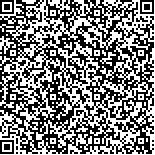下载中心
优秀审稿专家
优秀论文
相关链接
摘要

地表蒸散发是连接土壤—植被—大气连续体的纽带,结合遥感技术估算地表蒸散发已成为获取区域乃至全球尺度时空连续地表蒸散发量的有效手段。由于遥感估算地表蒸散发容易受到地表空间异质性和近地层气象条件复杂性的影响,在模型机理与变量参数化方案、输入数据和时间尺度扩展等方面存在不确定性,影响了其准确度的提高和应用范围的拓展,因此需要开展真实性检验。本文综述了当前遥感估算地表蒸散发(包括植被蒸腾和土壤蒸发)真实性检验研究的相关成果,重点归纳并总结了应用于遥感估算地表蒸散发真实性检验的直接检验法和间接检法的主要原理、适用性和优缺点,在此基础上阐述了当前遥感估算地表蒸散发真实性检验研究所面临的挑战。分析表明:由于地表空间异质性的普遍存在,遥感估算地表蒸散发真实性检验研究在理论和方法方面还受到诸多挑战,今后应打破地表蒸散发遥感产品真实性检验局限在均匀地表的传统思路,发展非均匀地表遥感估算地表蒸散发真实性检验的理论框架,包括地表水热状况空间异质性的度量、非均匀地表验证场的优化布设、非均匀下垫面地表蒸散发的多尺度观测试验、卫星像元/区域尺度地表蒸散发相对真值的获取、验证过程中的不确定性分析以及遥感估算地表蒸散发的实证研究等,并构建一个多源、多尺度、多方法、多层次的真实性检验技术流程,以期把遥感估算地表蒸散发真实性检验作为突破口,提升相应遥感产品的应用水平,推动定量遥感科学的发展。
Evapotranspiration (ET) is an important component in the soil-vegetation-atmosphere continuum. Remotely Sensed ET (RS-ET) provides multi-scale and spatiotemporally continuous information over the land surface, and has become an effective approach to obtain ET.Due to the heterogeneity of land surface and complexity of meteorological conditions at the near-surface layer, there exist various uncertainties derived from the model mechanism, parameterization scheme, input data and time scale conversion, which hindered correct estimations of ET, and further effect on its application. Therefore, it is essential to validate RS-ET to optimize the models and improve the associated products. This paper evaluated a group of validation methods for RS-ET (including evaporation and transpiration), which usually consists of direct validation and indirect validation. An overview of the principles, applicability, advantages, and disadvantages for all the validation methods were summarized. Direct validation is based on in situ measurements (including (micro-) lysimeter, stem sap flow, bowen ratio energy balance system, eddy covariance, and scintillator) to get the ground truth value, which can be used as the primary and reliable method to validate RS-ET and usually employed at the pixel and regional (or basin) scales. In the absence of ground truth ET, indirect validation becomes feasible, which can be classified into (1) cross-validation, (2) Multi-scale validation based on high spatial resolution remote sensing data, and (3) spatiotemporal variation analysis that combines multiple ET impact factors. Nevertheless, there are still a series of theoretical and methodological challenges in the validation of RS-ET, such as the scale mismatch between in situ measurement and remote sensing pixels due to the land surface heterogeneity. It is well-acknowledged that how to get the ground truth value at pixel and regional scales is the core issue of validation.This study demonstrated that validations of RS-ET products can be not only applied over homogeneous land surface but also heterogeneous surface with further development, which may at least but not limited to quantification of the spatial heterogeneity of land surface hydrothermal conditions, optimization of the experimental sites for validation over heterogeneous land surface, multi-scale measurements of ET on heterogeneous surface, acquisition of ground truth ET at pixel and regional scales, validation demonstration and uncertainty analyses of the validation process. Moreover, this study also proposed a generalized validation framework to validate RS_ET products at different scales (pixel scale and regional scale), which included direct validation (as the priority method) and indirect validation methods (as the auxiliary method), multiple validation data (i.e., ground truth ET at the pixel and regional scale, ET reanalysis data, various ET products, estimated ET from models and ET impact factors). The current framework focused on evaluating the accuracy and the spatiotemporal variations, identifying the error sources of the RS-ET products and analyzing the uncertainties during the validation process. This work is expected to improve the land surface remote sensing products and promote the development of quantitative remote sensing science.

